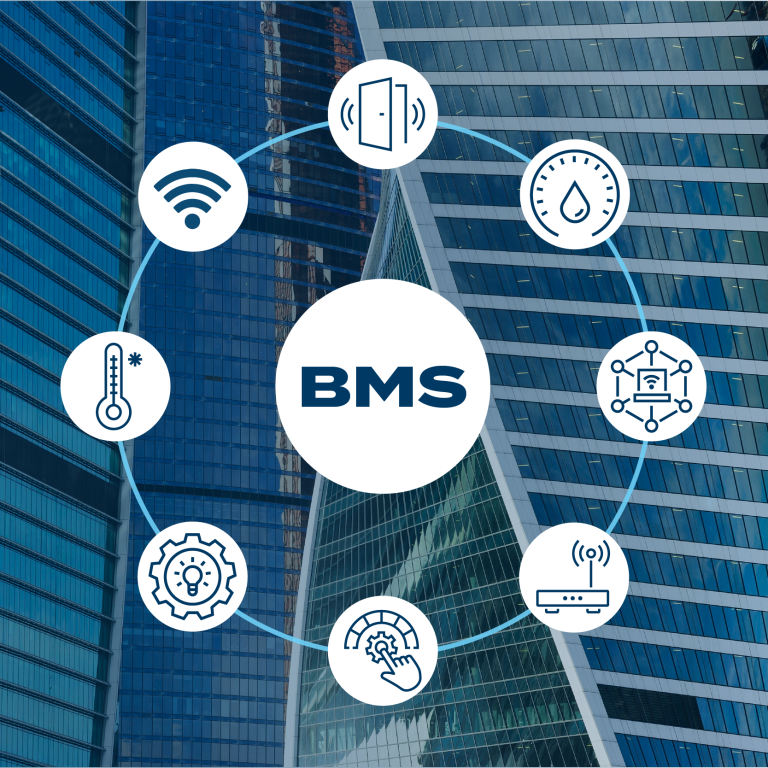BUILDING MANAGEMENT SYSTEM (BMS)
A building management system (BMS) is a control system that can be used to monitor and manage the mechanical, electrical and electro-mechanical services in a facility. Such services can include power, heating, ventilation, air-conditioning, physical access control, pumping stations, elevators and lights.

How do building automation systems work?
Typically, building management systems (BMS) break down into 5 components that interact with each other and form the “system”.
The first component is the information collection points. These can be sensors that measure the humidity, temperature, light, and occupancy of the room; fire or carbon monoxide detectors; or energy meters.
This information is transmitted to the “controllers” – the brains of the operation. Depending on the information they receive, they send commands to all the systems that are connected, such as the HVAC system, lamps, air purifiers, etc. Then the “output devices” carry out the commands.
Communication between all the components is done using a specific language (communication protocols), such as the BACnet protocol. Finally, there is a dashboard from which operators and managers can access information and make adjustments manually.



ENERGY SAVINGS
Correct use of BMS can bring down the energy consumption of a building by almost 30%. Optimize your building's energy use by implementing BMS.
Smart buildings are more sustainable and more efficient than conventional buildings.
IMPROVED COMFORT
Building management automation allows better control of room temperature and other air quality indicators in real time.
Benefits of BMS
FACILITY MANAGEMENT
Centralizing all information allows assets to be better managed and monitored, which reduces reactive maintenance.
With our BMS and controls solutions, your facilities team can take back control and optimise your building’s energy use. That means you can save on energy and costs, while improving the efficiency and carbon footprint of your operations. And in the face of the current climate emergency, that could make a world of difference.
We need your consent to load the translations
We use a third-party service to translate the website content that may collect data about your activity. Please review the details and accept the service to view the translations.

